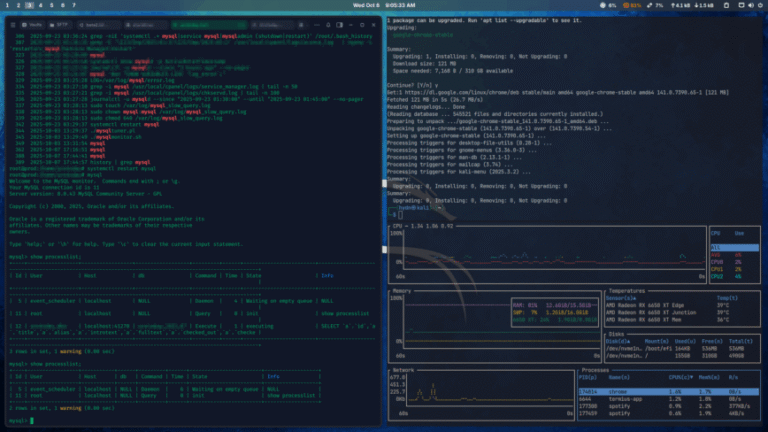
Let’s explore the key factors you should evaluate when deciding how to deploy your ERP system in 2025.
Editor’s Note: This previously published article has been updated in 2025 to reflect current ERP deployment trends, technology advances, and evolving industry best practices.
While pure on-premise ERP deployments have declined, some organizations continue to favor a hybrid model, blending on-premise systems with cloud components. This is particularly common in industries with:
While cloud ERP often offers operational savings, hidden fees or rapidly escalating licensing costs can surprise businesses that have not carefully modeled their financial commitments.
Cloud Implementation Strategies
The Evolving Cost of the Cloud
You already know how ERP deployment can streamline processes across your supply chain and drive business efficiency. But one of the most critical decisions today is not if you should implement ERP, but how you should deploy it. Should you embrace cloud-based ERP, maintain on-premise infrastructure, or adopt a hybrid approach that leverages the best of both worlds?
Cloud ERP shines in accessibility. Employees can access real-time data from virtually anywhere using laptops, smartphones, or tablets, a critical feature in today’s hybrid and remote work environments.
- Subscription fees
- Integration costs
- Data migration expenses
- Customization limitations
- Ongoing vendor support fees
Before making your ERP decision, collaborate with key stakeholders, including IT, finance, operations, and compliance, to conduct a thorough assessment of both technical and financial implications. With careful planning, your ERP deployment can become a powerful engine for growth, efficiency, and competitive advantage.
Financial Accounting Considerations
However, customization remains a limitation for some cloud ERP solutions. While many leading vendors now offer extensive configuration options, highly specialized industries, such as manufacturing, defense, or regulated healthcare, may still require deeper customizations that cloud platforms cannot always accommodate easily.
When evaluating customization needs, businesses should carefully assess whether their requirements can be met within the configuration capabilities of modern cloud ERP or whether more tailored, hybrid, or on-premise solutions are justified.
Balancing Flexibility and Customization
It is important to note that no system is entirely immune from risk, whether cloud or on-premise. However, cloud vendors typically have security teams and resources far beyond what most individual organizations can maintain internally. Still, for highly sensitive data, some industries may favor hybrid or private cloud deployments to maintain more direct control over specific datasets.
Cloud ERP remains cost-effective in many respects. It eliminates the need for upfront hardware investments, minimizes IT staffing requirements, and offers instant scalability as your business grows. Cloud ERP providers offer dedicated teams to maintain uptime, apply updates, and secure your data, reducing your internal maintenance burden.
In 2025, most CFOs are increasingly comfortable with cloud-based expense models, particularly when weighed against the flexibility, scalability, and lower upfront investment cloud ERP delivers.
The cloud offers speed, flexibility, AI-enhanced insights, and remote access capabilities essential for modern business. On-premise or hybrid deployments still serve a purpose for organizations requiring specialized customization, regulatory compliance, or heightened control.
Accessibility and Security in 2025
By Aaron Continelli
Hybrid ERP allows businesses to modernize portions of their ERP stack while preserving essential legacy components until full cloud migration becomes viable.
- Zero Trust architecture
- End-to-end encryption
- AI-powered threat detection
- Compliance with GDPR, CCPA, and regional data privacy regulations
- Geo-fencing and data sovereignty controls
In response, many cloud ERP providers now support composable ERP models, modular systems where companies select best-of-breed components and integrate them through APIs. This allows for greater flexibility while retaining much of the simplicity of SaaS platforms.
On-Premise and Hybrid Implementation in 2025
The Shift Toward Hybrid ERP
While cloud computing has become the dominant trend, it remains essential to assess both cloud and on-premise deployment models in light of your organization’s unique needs. Technology has advanced considerably, but so have the considerations surrounding cost, security, flexibility, and control.
- Strict data residency or sovereignty laws
- Legacy systems that remain deeply integrated into business operations
- Mission-critical processes requiring extremely low latency
Cloud ERP excels at rapid deployment, offering businesses the ability to go live faster than traditional on-premise installations. Cloud platforms also provide frequent updates, new features, and built-in AI and analytics capabilities that many on-premise solutions lack without substantial customization.
Planning for Hardware and Scalability
Large enterprises often lean toward hybrid models, while small and midsize businesses increasingly opt for full cloud adoption due to simplicity, lower IT staffing needs, and ease of maintenance. Regardless of company size, the goal remains the same: align ERP deployment with your company’s current needs while allowing room to grow and adapt.
Workload planning is equally important. Running analytics, reporting, and transactional ERP workloads on the same physical infrastructure can create performance bottlenecks. Many organizations offload analytics to cloud platforms while retaining transactional processing on-premise to optimize performance.
Right-Sizing for Your Business
However, cloud costs extend beyond the initial subscription fees. Today’s SaaS models often include tiered pricing for additional users, storage, and premium features such as AI-driven analytics or advanced integrations. Long-term subscription models can result in significant recurring expenses. Before committing, it is essential to conduct a full Total Cost of Ownership (TCO) analysis that accounts for:
Making the Right ERP Deployment Decision
ERP deployment is no longer a binary choice between cloud and on-premise. In 2025, businesses have a wide spectrum of deployment options, each offering distinct advantages depending on business size, industry regulations, customization needs, and budget considerations.
Security remains a common concern but has improved dramatically. Leading cloud ERP vendors employ advanced security protocols, including:
The financial treatment of ERP investments has evolved but remains a factor. CFOs still weigh capital expenditures (CapEx) versus operating expenses (OpEx) when evaluating deployment models. Cloud solutions generally fall under OpEx, which may appeal to organizations focused on expense predictability and balance sheet management. Conversely, some businesses still prefer capitalizing hardware and software investments over time, especially in industries with stable or highly regulated IT environments.
For companies maintaining on-premise infrastructure, scalability planning is more critical than ever. Gone are the days of purchasing oversized hardware with long-term leases that become obsolete before their contract expires. Instead, businesses should negotiate flexible agreements that allow for incremental hardware expansion aligned with evolving IT demands.





